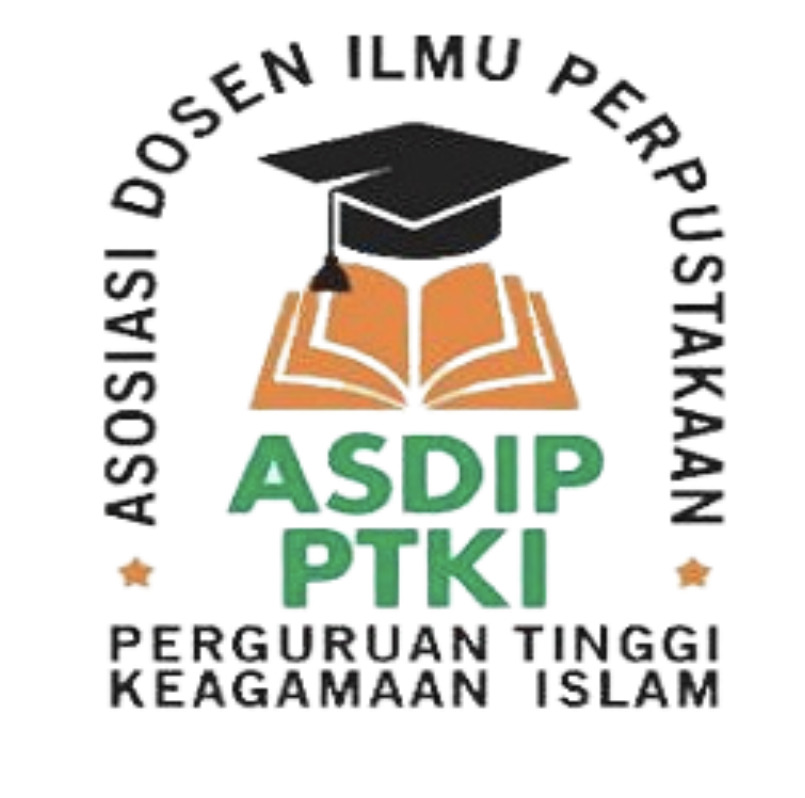Analisis Koleksi Perpustakaan Berdasarkan Standar Perpustakaan Perguruan Tinggi (Studi kasus di Perpustakaan UIN Sunan Gunung Djati Bandung)
DOI:
https://doi.org/10.29240/tik.v6i2.5015Keywords:
Library Collection, SNP-PT standard, Standard for Libraries in Higher EducationAbstract
This study aims to analyze the library collections of UIN Sunan Gunung Djati Bandung according to the National Library-University Standard (SNP-PT) and the Standard for Libraries in Higher Education. The research method uses descriptive qualitative. Data were collected by observing, in-depth interviews, analysis of various related documents, field notes, and triangulation. The results of the analysis show that based on the SNP-PT standard, the collection indicators that have met the standards include type and number, development, collection of local content, reference collection, and processing. The indicators for re-counting, weeding, preserving, and converting book collections to digital format have not been carried out as stipulated by the standard. Based on the Standard for Libraries in Higher Education, the collection indicators that have been met include the type and format of the collection, access to the collection, and the uniqueness of the collection. Meanwhile, the indicators for the availability of collections, processing infrastructure, information literacy, and the availability of long-term access have not met the standards due to the limited budget and number of human resources with special competencies in the field of information literacy and media transfer.
Downloads
References
ACRL. (2018). Standards for libraries in higher education pdf. https://www.google.com/search?q=standards+for+libraries+in+higher+education+pdf&rlz=1C1CHBF_enID945ID945&oq=Standard+for+Libraries+in+Higher+Education&aqs=chrome.1.69i57j0i22i30l2.3370j0j15&sourceid=chrome&ie=UTF-8
Becker, D. A., & Chiware, E. R. T. (2015). Citation Analysis of Masters’ Theses and Doctoral Dissertations: Balancing Library Collections With Students’ Research Information Needs. The Journal of Academic Librarianship, 41(5), 613–620. https://doi.org/10.1016/j.acalib.2015.06.022
Cahyono, T. Y. (2017). Standar Nasional Perpustakaan Perguruan Tinggi. 14.
Cox, J. (2018). Positioning the Academic Library within the Institution: A Literature Review. New Review of Academic Librarianship, 24(3–4), 217–241. https://doi.org/10.1080/13614533.2018.1466342
Feather, J. (2003). International Encyclopedia of Information and Library Science (2nd ed.). Routledge. https://doi.org/10.4324/9780203403303
Hackos, J. T. (2016). International Standards for Information Development and Content Management. IEEE Transactions on Professional Communication, 59(1), 24–36. https://doi.org/10.1109/TPC.2016.2527278
Hakim, T. D., Rismayeti, R., & Amelia, V. A. V. (2020). Implementasi NP 010: 2011 Perpustakaan Perguruan TInggi di UPT Perpustakaan Universitas Lancang Kuning Pekanbaru. Prosiding Seminar Nasional Pakar, 2.81.1-2.81.1. https://doi.org/10.25105/pakar.v0i0.6988
Haryono, B. S., & Cahyono, T. Y. (2020). Implemantasi Kebijakan Standar Nasional Perpustakaan Perguruan Tinggi: Di Perpustakaan Universitas Negeri Malang. BACA: Jurnal Dokumentasi dan Informasi, 41(2), Art. 2.
Henderson, W. A., Hubbard, W. J., & McAbee, S. L. (1993). Collection assessment in academic libraries: Institutional effectiveness in microcosm. Library Acquisitions: Practice & Theory, 17(2), 197–201. https://doi.org/10.1016/0364-6408(93)90062-B
Henry, E., Longstaff, R., & Van Kampen, D. (2008). Collection analysis outcomes in an academic library. Collection Building, 27(3), 113–117. https://doi.org/10.1108/01604950810886022
Imamah, F. N. (n.d.). Diajukan Untuk Memenuhi Salah Satu Syarat Memperoleh Gelar Magister Dalam Bidang Perpustakaan dan Informasi Islam Pada Pascasarjana Universitas Islam Negeri Alauddin Makassar. 149.
Kelly, M. (2014). Applying the Tiers of Assessment: A Holistic and Systematic Approach to Assessing Library Collections. The Journal of Academic Librarianship, 40(6), 585–591. https://doi.org/10.1016/j.acalib.2014.10.002
Montano, B. (2014). The new paradigm of collection management in university libraries: From crisis to revolution. Collection Building, 33. https://doi.org/10.1108/CB-02-2014-0012
Nurohman, A. (2017). Pengelolaan Perpustakaan Perguruan Tinggi Berbasis Akreditasi. LIBRARIA: Jurnal Perpustakaan, 4(2), 419. https://doi.org/10.21043/libraria.v4i2.1711
Nworie, J., & Magnus, U. (2017). Library Collection, Nature, Types and Uses in Academic Libraries.
Perka 13 2017 SNP Perpustakaan Perguruan Tinggi. (n.d.). Retrieved May 14, 2022, from https://jdih.perpusnas.go.id/file_peraturan/Perka_13_2017_SNP_Perpustakaan_Perguruan_Tinggi.pdf
Perpustakaan Nasional. (2015). Pedoman Penyelenggaraan Perpustakaan Perguruan tinggi (1st ed.). Perpustakaan Nasional.
Sugiyono, S. (2008). Memahami Penelitian Kualitatif. Alfabeta.
UU No. 43 Tahun 2007 tentang Perpustakaan. (n.d.). Retrieved April 27, 2022, from https://jdih.perpusnas.go.id/file_peraturan/UU_No._43_Tahun_2007_tentang_Perpustakaan_.pdf
Downloads
Additional Files
Published
Issue
Section
Citation Check
License
Authors who publish with Tik Ilmeu : Jurnal Ilmu Perpustakaan dan Informasi agree to the following terms:
- Authors retain copyright and grant the journal right of first publication with the work simultaneously licensed under a Creative Commons Attribution-NonCommercial-ShareAlike 4.0 International License (CC BY-NC-SA 4.0) that allows others to share the work with an acknowledgment of the work's authorship and initial publication in this journal.
- Authors are able to enter into separate, additional contractual arrangements for the non-exclusive distribution of the journal's published version of the work (e.g., post it to an institutional repository or publish it in a book), with an acknowledgment of its initial publication in this journal.
- Authors are permitted and encouraged to post their work online (e.g., in institutional repositories or on their website) prior to and during the submission process, as it can lead to productive exchanges, as well as earlier and greater citation of published work (See The Effect of Open Access).







 This work is licensed under a
This work is licensed under a 